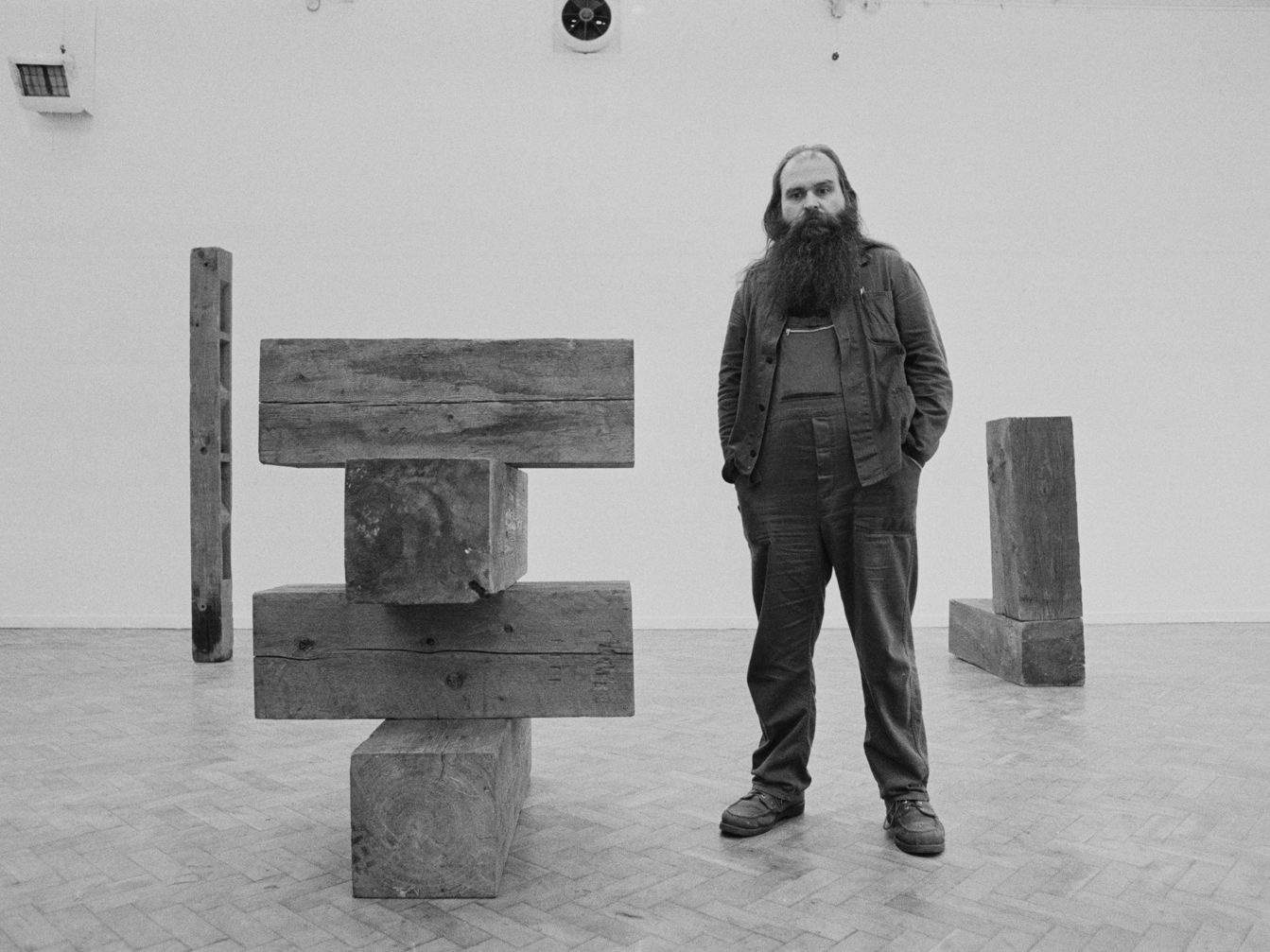Carl Andre, one of the most influential pioneers of 1960s minimalist sculpture, died Wednesday in Manhattan at the age of 88. The sad news was confirmed by Steven Henry, senior associate at Paula Cooper Gallery in New York, which represented Andre. Andre was one of the leading figures in the minimalist movement, which reduced sculpture to its essential elements and transformed it into simple forms made from industrial materials. His work helped redefine the concept of art, shifting the focus from abstract expressionism to rudimentary forms and industrial materials. The artist worked primarily with elemental metals, granite, wood, and bricks, creating works with purely geometric forms devoid of emotional intent.
Carl Andre is best remembered for his bold exploration of form and material, which influenced generations of subsequent artists. Born in Quincy, U.S., on September 16, 1935, Carl Andre had a childhood that he described as “wild,” but thanks to good grades in school, he obtained a scholarship to Phillips Academy in Andover, thus beginning his artistic training. During a stay in England in 1954, Andre had the opportunity to explore Stonehenge, a moment that would profoundly mark his artistic journey, inspiring him to pursue sculpture. After a year of military service, he moved to New York City in 1957, where he joined an art circle that included avant-garde filmmaker Hollis Frampton and painter Frank Stella. Stella’s works, with their stripes on shaped canvases, greatly influenced Andre, opening new horizons in his artistic exploration. Andre’s artistic epiphany led him toward a search for highly simplified forms, forgoing the traditional theatricality of the plinth and experimenting with horizontal sculptural space in innovative ways. This unique approach attracted the attention of art galleries, which began to take an interest in his work. In 1958, Andre formed a strong friendship with Frank Stella, collaborating to push each other’s boundaries of their respective art forms.
During one of those moments, Stella suggested that the artist use some lumber he had found in his studio. Andre took one of the beams and, with a mallet, rudimentarily shaped a form that vaguely recalled a famous sculpture by Constantin Brancusi. When he showed the result to Stella, she recognized the originality of Andre’s approach, noting that he had created something completely new in the field of sculpture.
He preferred to identify himself as a materialist rather than a minimalist, as his artistic practice emphasized a rigorous dedication to materials, seeking to allow them to express themselves in the simplest form possible. In one of his statements, he expressed a desire to create a sculpture devoid of human associations, a work that would allow matter to communicate autonomously, aspiring to something almost primordial, almost neolithic. However, unlike other minimalist artists such as Donald Judd and Dan Flavin, Andre’s work was characterized by a hard, ironclad, severe quality. In a review of one of his shows, critic Peter Schjeldahl, did not hesitate to declare that “Andre is not particularly funny.”
Andre’s reluctance to grant interviews helped reinforce the image of an incisive-thinking artist whose work reflected his own psyche. Carl Andre’s 1960 Elements series, consisting of sculptures composed of red cedar blocks arranged in various configurations, continues to be recognized as an icon of minimalism. The same is true of his works Plains and Squares, made of steel, aluminum and magnesium plates, the industrial aspect of which was central to his artistic approach. Although art historians have identified parallels between his works and Russian constructivism, Andre himself rejected many of the theories that surrounded his art. What makes his works unique is their unusual presentation: displayed directly on the ground, without pedestals, they challenged the traditional concept of sculpture and invited viewers to physically interact with them. Andre wanted his creations to be perceived as an integral part of their surroundings, rather than objects to be passively admired.
In 1969, during the founding of the Art Workers Coalition, Andre proposed a “reasonable and practical proposal,” calling on artists to disassociate themselves from galleries and cease exhibiting their work, except for their closest friends. This initiative reflected his critical view of the art world and his desire to radically reform it. The Guggenheim Museum in New York dedicated a solo exhibition to him in 1970, which included not only sculptures but also poems by the artist. These poems, often rich in historical and autobiographical references, reveal a more intimate aspect of Andre’s artistic sensibility. His career later took an abrupt turn in 1985 when he was arrested and charged with the death of his wife. Although he was acquitted in 1988, the case continued to stir controversy and influence the perception of his work. Nevertheless, Andre continued to show his work in prestigious exhibitions around the world, demonstrating extraordinary resilience in the face of personal and professional challenges. His influence on conceptual art was profound, pushing art increasingly into the realm of ideas rather than the purely visual. Andre himself has described his work as “close to zero,” highlighting his predilection for art that is non-representational and devoid of sentimentality, but intrinsically linked to the conceptual sphere.
“Carl Andre has redefined the parameters of sculpture and poetry through his use of unaltered industrial materials and an innovative approach to language,” Paula Cooper Gallery wrote in a note. “He has created over 2,000 sculptures and an equal number of poems over his nearly 70-year career, guided by a commitment to pure matter in lucid geometric arrangements.”
 |
| Farewell to Carl Andre, great pioneer of Minimalism |
Warning: the translation into English of the original Italian article was created using automatic tools. We undertake to review all articles, but we do not guarantee the total absence of inaccuracies in the translation due to the program. You can find the original by clicking on the ITA button. If you find any mistake,please contact us.